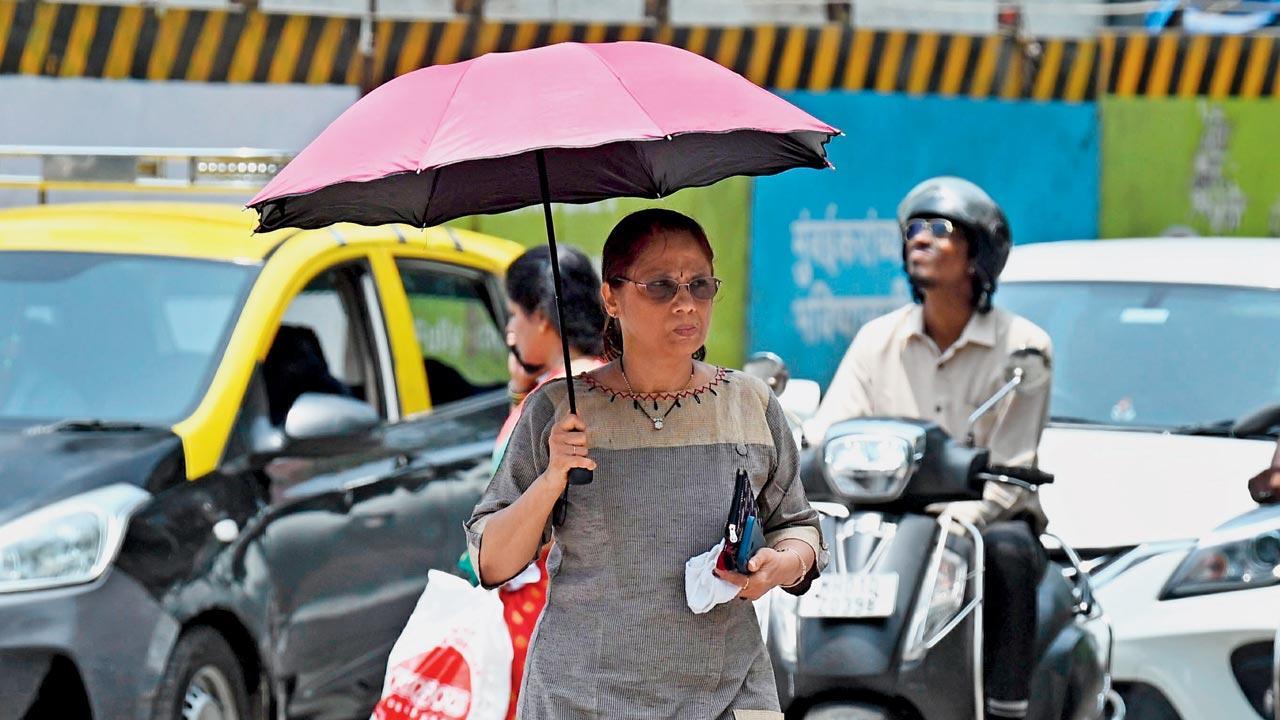Climate change may have devastating consequences for Bombay but, luckily for us, Heat Action Plans exist

If climatic projections are anything to go by, this year’s heatwaves are going to be the norm. representation Pic/Sameer Markande
 I had no idea what a Heat Action Plan was, until a few days ago. This isn’t surprising given how critical information is often lost amidst headlines proclaiming the government of India as the world’s most efficient. It’s still weird that this hasn’t been talked about more though, given the government’s obsession with telling everyone how it has plans for everything. Heat Action Plans focus on that critical word ‘action’, so I expect they will start to appear more often in the years to come. At the end of the day, plans matter, even if they don’t work. It’s about public relations and keeping up appearances.
I had no idea what a Heat Action Plan was, until a few days ago. This isn’t surprising given how critical information is often lost amidst headlines proclaiming the government of India as the world’s most efficient. It’s still weird that this hasn’t been talked about more though, given the government’s obsession with telling everyone how it has plans for everything. Heat Action Plans focus on that critical word ‘action’, so I expect they will start to appear more often in the years to come. At the end of the day, plans matter, even if they don’t work. It’s about public relations and keeping up appearances.
For those as uninformed as I am, here’s what a Heat Action Plan (HAP) means. Apparently, governments at the state, district and city levels have prepared them to increase general preparedness and lower the adverse impacts of extreme heat. They supposedly do this by outlining measures and strategies to help us cope with heatwaves that are predicted to become more routine. Remember the heatwave warning issued a month or so ago? It was all part of a HAP.
ADVERTISEMENT
I did a bit of digging around to see if I could figure out what this means for Bombay. HAPs are meant to provide a region’s heat profile, track trends in temperature and complete a vulnerability assessment based on which a response plan can be created. Recommendations are then made for mitigating and addressing the impact of a heatwave, before outlining what various line departments (disaster management authority, police, labour department, etc.) are meant to do after such an event has occurred. There are campaigns launched to educate the public about risks, and the government is supposed to offer tangible relief in the form of heat shelters, cooling centres and clean drinking water to avoid dehydration.
Another thing I found was that the National Disaster Management Authority and India Meteorological Department are working with 23 states to develop these plans. And, that Maharashtra is one of the few states with district-level HAPs. It all sounded impressive on paper until I tried getting to grips with this at a more granular level.
When I looked at the HAP for Thane, for instance, I read about the administration’s attempt to address heat stress by “establishing effective pathways for preparedness and response mechanisms.” There was nothing specific about what this meant on the ground. On paper, HAPs are to provide directives for hospitals to be equipped with supplies, and make sure there are trained healthcare workers to treat patients with heat-related ailments. There are also long-term measures to be put into place, including the use of heat-resistant building materials, the adoption of cool roofing technologies, and changes to how urban spaces are constructed.
I couldn’t help but applaud the common-sensical approach, because nothing in the plan suggested that these things couldn’t be done. What I also knew for certain, however, is that this would stay on paper because our state government also has a history of looking the other way. Scientists and environmentalists have issued warnings about industrial activities, deforestation and greenhouse gas emissions for decades. They have published multiple reports about the impact of rapid urbanisation on land use, the depletion of groundwater resources and devastating impact of unplanned construction that has decimated water levels in our cities. Little has been done to address these concerns.
One of the problems also cited by people studying the efficacy of HAPs is the inconsistency of their methods. There are varying degrees of implementation across states as they depend upon local priorities, budgets and capabilities. Missing infrastructure is another issue, along with a glaring lack of attention to communities that need the most help. I don’t know of a single cooling station or heat shelter and am pretty sure running water is still a dream for millions in this city. We just don’t talk about this because we have accepted it as the status quo.
If climatic projections are anything to go by—despite the arrogance with which our ministers treat them—this year’s heatwaves are going to be the norm, not an exception. Heat extremes are expected to intensify and occur more frequently, affecting larger areas. So, while it’s great that HAPs exist, we should ask more questions about implementation. We need to pay attention to things that can have consequences for coming generations because, if the past decade has taught us anything, it is that our government is always interested in announcing plans, rarely in acting upon them.
When he isn’t ranting about all things Mumbai, Lindsay Pereira can be almost sweet. He tweets @lindsaypereira
Send your feedback to mailbag@mid-day.com
The views expressed in this column are the individual’s and don’t represent those of the paper
 Subscribe today by clicking the link and stay updated with the latest news!" Click here!
Subscribe today by clicking the link and stay updated with the latest news!" Click here!








